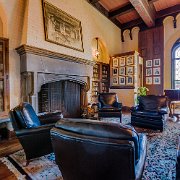
1 The Players Club of Detroit was founded in 1910 by a group of local Detroit businessmen as an institution to encourage amateur theater. From the beginning, it was a strictly male club. For the first 15 years of the club's existence, they were forced to perform in different venues each month, including the Detroit Athletic Club, the University Club and the Twentieth Century Club.
A number of the financial elite of early 20th century Detroit were members of the Players, including Henry Joy, Truman Newberry, James Couzens, and Lawrence Fisher. The club continued as a successful and popular gentleman's club until the 1970s, when membership began to drop. However, the club experienced a renaissance in the 1990s, and as of 2005 there were 174 members
A number of the financial elite of early 20th century Detroit were members of the Players, including Henry Joy, Truman Newberry, James Couzens, and Lawrence Fisher. The club continued as a successful and popular gentleman's club until the 1970s, when membership began to drop. However, the club experienced a renaissance in the 1990s, and as of 2005 there were 174 members
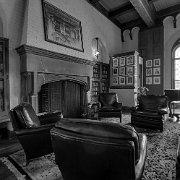
2 The Players Club of Detroit was founded in 1910 by a group of local Detroit businessmen as an institution to encourage amateur theater. From the beginning, it was a strictly male club. For the first 15 years of the club's existence, they were forced to perform in different venues each month, including the Detroit Athletic Club, the University Club and the Twentieth Century Club.
A number of the financial elite of early 20th century Detroit were members of the Players, including Henry Joy, Truman Newberry, James Couzens, and Lawrence Fisher. The club continued as a successful and popular gentleman's club until the 1970s, when membership began to drop. However, the club experienced a renaissance in the 1990s, and as of 2005 there were 174 members
A number of the financial elite of early 20th century Detroit were members of the Players, including Henry Joy, Truman Newberry, James Couzens, and Lawrence Fisher. The club continued as a successful and popular gentleman's club until the 1970s, when membership began to drop. However, the club experienced a renaissance in the 1990s, and as of 2005 there were 174 members

3 The Players Club of Detroit was founded in 1910 by a group of local Detroit businessmen as an institution to encourage amateur theater. From the beginning, it was a strictly male club. For the first 15 years of the club's existence, they were forced to perform in different venues each month, including the Detroit Athletic Club, the University Club and the Twentieth Century Club.
A number of the financial elite of early 20th century Detroit were members of the Players, including Henry Joy, Truman Newberry, James Couzens, and Lawrence Fisher. The club continued as a successful and popular gentleman's club until the 1970s, when membership began to drop. However, the club experienced a renaissance in the 1990s, and as of 2005 there were 174 members
A number of the financial elite of early 20th century Detroit were members of the Players, including Henry Joy, Truman Newberry, James Couzens, and Lawrence Fisher. The club continued as a successful and popular gentleman's club until the 1970s, when membership began to drop. However, the club experienced a renaissance in the 1990s, and as of 2005 there were 174 members
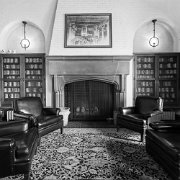
4 The Players Club of Detroit was founded in 1910 by a group of local Detroit businessmen as an institution to encourage amateur theater. From the beginning, it was a strictly male club. For the first 15 years of the club's existence, they were forced to perform in different venues each month, including the Detroit Athletic Club, the University Club and the Twentieth Century Club.
A number of the financial elite of early 20th century Detroit were members of the Players, including Henry Joy, Truman Newberry, James Couzens, and Lawrence Fisher. The club continued as a successful and popular gentleman's club until the 1970s, when membership began to drop. However, the club experienced a renaissance in the 1990s, and as of 2005 there were 174 members
A number of the financial elite of early 20th century Detroit were members of the Players, including Henry Joy, Truman Newberry, James Couzens, and Lawrence Fisher. The club continued as a successful and popular gentleman's club until the 1970s, when membership began to drop. However, the club experienced a renaissance in the 1990s, and as of 2005 there were 174 members
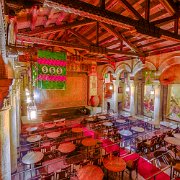
5 The Players Club of Detroit was founded in 1910 by a group of local Detroit businessmen as an institution to encourage amateur theater. From the beginning, it was a strictly male club. For the first 15 years of the club's existence, they were forced to perform in different venues each month, including the Detroit Athletic Club, the University Club and the Twentieth Century Club.
A number of the financial elite of early 20th century Detroit were members of the Players, including Henry Joy, Truman Newberry, James Couzens, and Lawrence Fisher. The club continued as a successful and popular gentleman's club until the 1970s, when membership began to drop. However, the club experienced a renaissance in the 1990s, and as of 2005 there were 174 members
A number of the financial elite of early 20th century Detroit were members of the Players, including Henry Joy, Truman Newberry, James Couzens, and Lawrence Fisher. The club continued as a successful and popular gentleman's club until the 1970s, when membership began to drop. However, the club experienced a renaissance in the 1990s, and as of 2005 there were 174 members
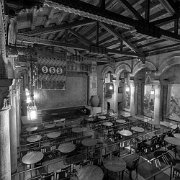
6 The Players Club of Detroit was founded in 1910 by a group of local Detroit businessmen as an institution to encourage amateur theater. From the beginning, it was a strictly male club. For the first 15 years of the club's existence, they were forced to perform in different venues each month, including the Detroit Athletic Club, the University Club and the Twentieth Century Club.
A number of the financial elite of early 20th century Detroit were members of the Players, including Henry Joy, Truman Newberry, James Couzens, and Lawrence Fisher. The club continued as a successful and popular gentleman's club until the 1970s, when membership began to drop. However, the club experienced a renaissance in the 1990s, and as of 2005 there were 174 members
A number of the financial elite of early 20th century Detroit were members of the Players, including Henry Joy, Truman Newberry, James Couzens, and Lawrence Fisher. The club continued as a successful and popular gentleman's club until the 1970s, when membership began to drop. However, the club experienced a renaissance in the 1990s, and as of 2005 there were 174 members
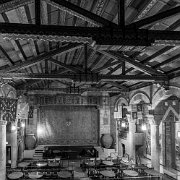
7 The Players Club of Detroit was founded in 1910 by a group of local Detroit businessmen as an institution to encourage amateur theater. From the beginning, it was a strictly male club. For the first 15 years of the club's existence, they were forced to perform in different venues each month, including the Detroit Athletic Club, the University Club and the Twentieth Century Club.
A number of the financial elite of early 20th century Detroit were members of the Players, including Henry Joy, Truman Newberry, James Couzens, and Lawrence Fisher. The club continued as a successful and popular gentleman's club until the 1970s, when membership began to drop. However, the club experienced a renaissance in the 1990s, and as of 2005 there were 174 members
A number of the financial elite of early 20th century Detroit were members of the Players, including Henry Joy, Truman Newberry, James Couzens, and Lawrence Fisher. The club continued as a successful and popular gentleman's club until the 1970s, when membership began to drop. However, the club experienced a renaissance in the 1990s, and as of 2005 there were 174 members
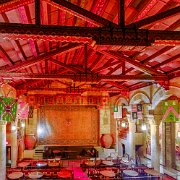
8 The Players Club of Detroit was founded in 1910 by a group of local Detroit businessmen as an institution to encourage amateur theater. From the beginning, it was a strictly male club. For the first 15 years of the club's existence, they were forced to perform in different venues each month, including the Detroit Athletic Club, the University Club and the Twentieth Century Club.
A number of the financial elite of early 20th century Detroit were members of the Players, including Henry Joy, Truman Newberry, James Couzens, and Lawrence Fisher. The club continued as a successful and popular gentleman's club until the 1970s, when membership began to drop. However, the club experienced a renaissance in the 1990s, and as of 2005 there were 174 members
A number of the financial elite of early 20th century Detroit were members of the Players, including Henry Joy, Truman Newberry, James Couzens, and Lawrence Fisher. The club continued as a successful and popular gentleman's club until the 1970s, when membership began to drop. However, the club experienced a renaissance in the 1990s, and as of 2005 there were 174 members
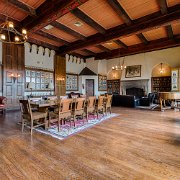
9 The Players Club of Detroit was founded in 1910 by a group of local Detroit businessmen as an institution to encourage amateur theater. From the beginning, it was a strictly male club. For the first 15 years of the club's existence, they were forced to perform in different venues each month, including the Detroit Athletic Club, the University Club and the Twentieth Century Club.
A number of the financial elite of early 20th century Detroit were members of the Players, including Henry Joy, Truman Newberry, James Couzens, and Lawrence Fisher. The club continued as a successful and popular gentleman's club until the 1970s, when membership began to drop. However, the club experienced a renaissance in the 1990s, and as of 2005 there were 174 members
A number of the financial elite of early 20th century Detroit were members of the Players, including Henry Joy, Truman Newberry, James Couzens, and Lawrence Fisher. The club continued as a successful and popular gentleman's club until the 1970s, when membership began to drop. However, the club experienced a renaissance in the 1990s, and as of 2005 there were 174 members
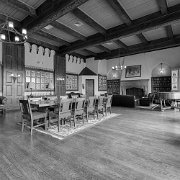
10 The Players Club of Detroit was founded in 1910 by a group of local Detroit businessmen as an institution to encourage amateur theater. From the beginning, it was a strictly male club. For the first 15 years of the club's existence, they were forced to perform in different venues each month, including the Detroit Athletic Club, the University Club and the Twentieth Century Club.
A number of the financial elite of early 20th century Detroit were members of the Players, including Henry Joy, Truman Newberry, James Couzens, and Lawrence Fisher. The club continued as a successful and popular gentleman's club until the 1970s, when membership began to drop. However, the club experienced a renaissance in the 1990s, and as of 2005 there were 174 members
A number of the financial elite of early 20th century Detroit were members of the Players, including Henry Joy, Truman Newberry, James Couzens, and Lawrence Fisher. The club continued as a successful and popular gentleman's club until the 1970s, when membership began to drop. However, the club experienced a renaissance in the 1990s, and as of 2005 there were 174 members
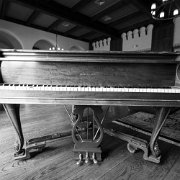
11 The Players Club of Detroit was founded in 1910 by a group of local Detroit businessmen as an institution to encourage amateur theater. From the beginning, it was a strictly male club. For the first 15 years of the club's existence, they were forced to perform in different venues each month, including the Detroit Athletic Club, the University Club and the Twentieth Century Club.
A number of the financial elite of early 20th century Detroit were members of the Players, including Henry Joy, Truman Newberry, James Couzens, and Lawrence Fisher. The club continued as a successful and popular gentleman's club until the 1970s, when membership began to drop. However, the club experienced a renaissance in the 1990s, and as of 2005 there were 174 members
A number of the financial elite of early 20th century Detroit were members of the Players, including Henry Joy, Truman Newberry, James Couzens, and Lawrence Fisher. The club continued as a successful and popular gentleman's club until the 1970s, when membership began to drop. However, the club experienced a renaissance in the 1990s, and as of 2005 there were 174 members
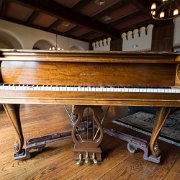
12 The Players Club of Detroit was founded in 1910 by a group of local Detroit businessmen as an institution to encourage amateur theater. From the beginning, it was a strictly male club. For the first 15 years of the club's existence, they were forced to perform in different venues each month, including the Detroit Athletic Club, the University Club and the Twentieth Century Club.
A number of the financial elite of early 20th century Detroit were members of the Players, including Henry Joy, Truman Newberry, James Couzens, and Lawrence Fisher. The club continued as a successful and popular gentleman's club until the 1970s, when membership began to drop. However, the club experienced a renaissance in the 1990s, and as of 2005 there were 174 members
A number of the financial elite of early 20th century Detroit were members of the Players, including Henry Joy, Truman Newberry, James Couzens, and Lawrence Fisher. The club continued as a successful and popular gentleman's club until the 1970s, when membership began to drop. However, the club experienced a renaissance in the 1990s, and as of 2005 there were 174 members
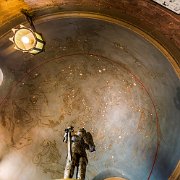
13 The Players Club of Detroit was founded in 1910 by a group of local Detroit businessmen as an institution to encourage amateur theater. From the beginning, it was a strictly male club. For the first 15 years of the club's existence, they were forced to perform in different venues each month, including the Detroit Athletic Club, the University Club and the Twentieth Century Club.
A number of the financial elite of early 20th century Detroit were members of the Players, including Henry Joy, Truman Newberry, James Couzens, and Lawrence Fisher. The club continued as a successful and popular gentleman's club until the 1970s, when membership began to drop. However, the club experienced a renaissance in the 1990s, and as of 2005 there were 174 members
A number of the financial elite of early 20th century Detroit were members of the Players, including Henry Joy, Truman Newberry, James Couzens, and Lawrence Fisher. The club continued as a successful and popular gentleman's club until the 1970s, when membership began to drop. However, the club experienced a renaissance in the 1990s, and as of 2005 there were 174 members
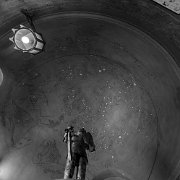
14 The Players Club of Detroit was founded in 1910 by a group of local Detroit businessmen as an institution to encourage amateur theater. From the beginning, it was a strictly male club. For the first 15 years of the club's existence, they were forced to perform in different venues each month, including the Detroit Athletic Club, the University Club and the Twentieth Century Club.
A number of the financial elite of early 20th century Detroit were members of the Players, including Henry Joy, Truman Newberry, James Couzens, and Lawrence Fisher. The club continued as a successful and popular gentleman's club until the 1970s, when membership began to drop. However, the club experienced a renaissance in the 1990s, and as of 2005 there were 174 members
A number of the financial elite of early 20th century Detroit were members of the Players, including Henry Joy, Truman Newberry, James Couzens, and Lawrence Fisher. The club continued as a successful and popular gentleman's club until the 1970s, when membership began to drop. However, the club experienced a renaissance in the 1990s, and as of 2005 there were 174 members
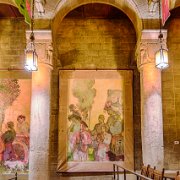
15 The Players Club of Detroit was founded in 1910 by a group of local Detroit businessmen as an institution to encourage amateur theater. From the beginning, it was a strictly male club. For the first 15 years of the club's existence, they were forced to perform in different venues each month, including the Detroit Athletic Club, the University Club and the Twentieth Century Club.
A number of the financial elite of early 20th century Detroit were members of the Players, including Henry Joy, Truman Newberry, James Couzens, and Lawrence Fisher. The club continued as a successful and popular gentleman's club until the 1970s, when membership began to drop. However, the club experienced a renaissance in the 1990s, and as of 2005 there were 174 members
A number of the financial elite of early 20th century Detroit were members of the Players, including Henry Joy, Truman Newberry, James Couzens, and Lawrence Fisher. The club continued as a successful and popular gentleman's club until the 1970s, when membership began to drop. However, the club experienced a renaissance in the 1990s, and as of 2005 there were 174 members
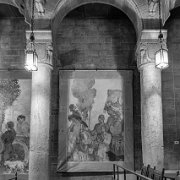
16 The Players Club of Detroit was founded in 1910 by a group of local Detroit businessmen as an institution to encourage amateur theater. From the beginning, it was a strictly male club. For the first 15 years of the club's existence, they were forced to perform in different venues each month, including the Detroit Athletic Club, the University Club and the Twentieth Century Club.
A number of the financial elite of early 20th century Detroit were members of the Players, including Henry Joy, Truman Newberry, James Couzens, and Lawrence Fisher. The club continued as a successful and popular gentleman's club until the 1970s, when membership began to drop. However, the club experienced a renaissance in the 1990s, and as of 2005 there were 174 members
A number of the financial elite of early 20th century Detroit were members of the Players, including Henry Joy, Truman Newberry, James Couzens, and Lawrence Fisher. The club continued as a successful and popular gentleman's club until the 1970s, when membership began to drop. However, the club experienced a renaissance in the 1990s, and as of 2005 there were 174 members
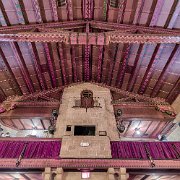
17 The Players Club of Detroit was founded in 1910 by a group of local Detroit businessmen as an institution to encourage amateur theater. From the beginning, it was a strictly male club. For the first 15 years of the club's existence, they were forced to perform in different venues each month, including the Detroit Athletic Club, the University Club and the Twentieth Century Club.
A number of the financial elite of early 20th century Detroit were members of the Players, including Henry Joy, Truman Newberry, James Couzens, and Lawrence Fisher. The club continued as a successful and popular gentleman's club until the 1970s, when membership began to drop. However, the club experienced a renaissance in the 1990s, and as of 2005 there were 174 members
A number of the financial elite of early 20th century Detroit were members of the Players, including Henry Joy, Truman Newberry, James Couzens, and Lawrence Fisher. The club continued as a successful and popular gentleman's club until the 1970s, when membership began to drop. However, the club experienced a renaissance in the 1990s, and as of 2005 there were 174 members
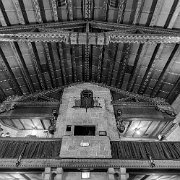
18 The Players Club of Detroit was founded in 1910 by a group of local Detroit businessmen as an institution to encourage amateur theater. From the beginning, it was a strictly male club. For the first 15 years of the club's existence, they were forced to perform in different venues each month, including the Detroit Athletic Club, the University Club and the Twentieth Century Club.
A number of the financial elite of early 20th century Detroit were members of the Players, including Henry Joy, Truman Newberry, James Couzens, and Lawrence Fisher. The club continued as a successful and popular gentleman's club until the 1970s, when membership began to drop. However, the club experienced a renaissance in the 1990s, and as of 2005 there were 174 members
A number of the financial elite of early 20th century Detroit were members of the Players, including Henry Joy, Truman Newberry, James Couzens, and Lawrence Fisher. The club continued as a successful and popular gentleman's club until the 1970s, when membership began to drop. However, the club experienced a renaissance in the 1990s, and as of 2005 there were 174 members

19 The Players Club of Detroit was founded in 1910 by a group of local Detroit businessmen as an institution to encourage amateur theater. From the beginning, it was a strictly male club. For the first 15 years of the club's existence, they were forced to perform in different venues each month, including the Detroit Athletic Club, the University Club and the Twentieth Century Club.
A number of the financial elite of early 20th century Detroit were members of the Players, including Henry Joy, Truman Newberry, James Couzens, and Lawrence Fisher. The club continued as a successful and popular gentleman's club until the 1970s, when membership began to drop. However, the club experienced a renaissance in the 1990s, and as of 2005 there were 174 members
A number of the financial elite of early 20th century Detroit were members of the Players, including Henry Joy, Truman Newberry, James Couzens, and Lawrence Fisher. The club continued as a successful and popular gentleman's club until the 1970s, when membership began to drop. However, the club experienced a renaissance in the 1990s, and as of 2005 there were 174 members

20 The Players Club of Detroit was founded in 1910 by a group of local Detroit businessmen as an institution to encourage amateur theater. From the beginning, it was a strictly male club. For the first 15 years of the club's existence, they were forced to perform in different venues each month, including the Detroit Athletic Club, the University Club and the Twentieth Century Club.
A number of the financial elite of early 20th century Detroit were members of the Players, including Henry Joy, Truman Newberry, James Couzens, and Lawrence Fisher. The club continued as a successful and popular gentleman's club until the 1970s, when membership began to drop. However, the club experienced a renaissance in the 1990s, and as of 2005 there were 174 members
A number of the financial elite of early 20th century Detroit were members of the Players, including Henry Joy, Truman Newberry, James Couzens, and Lawrence Fisher. The club continued as a successful and popular gentleman's club until the 1970s, when membership began to drop. However, the club experienced a renaissance in the 1990s, and as of 2005 there were 174 members
Players Club